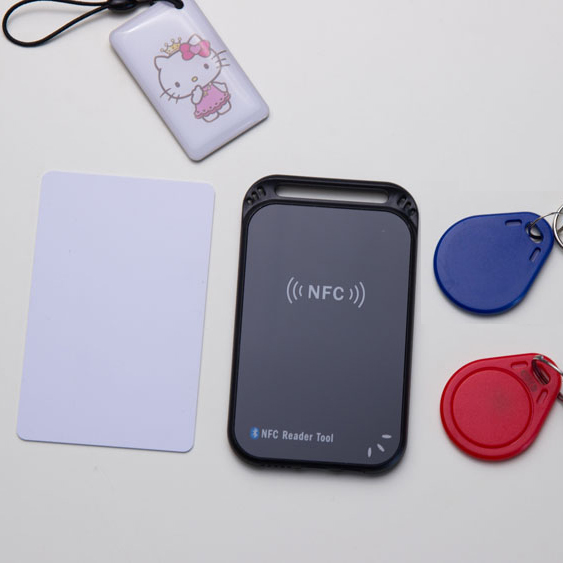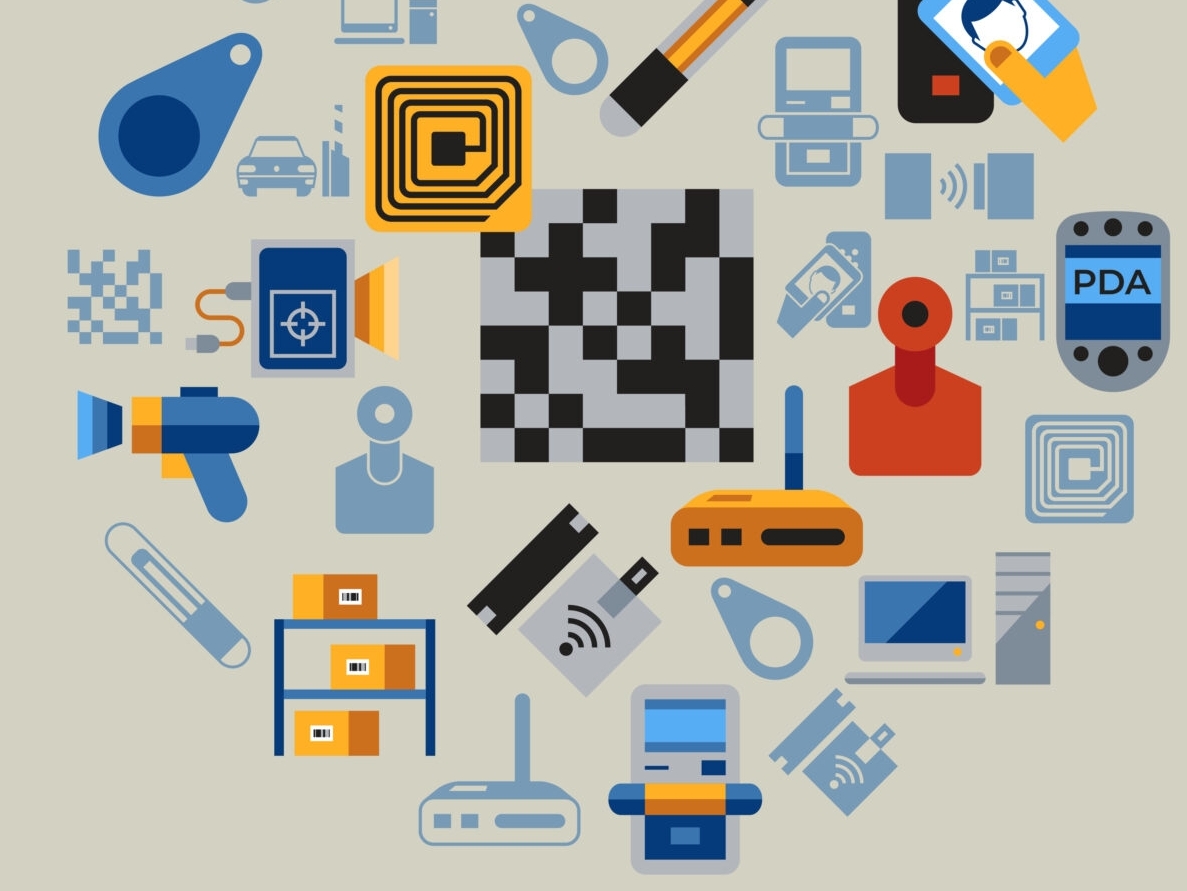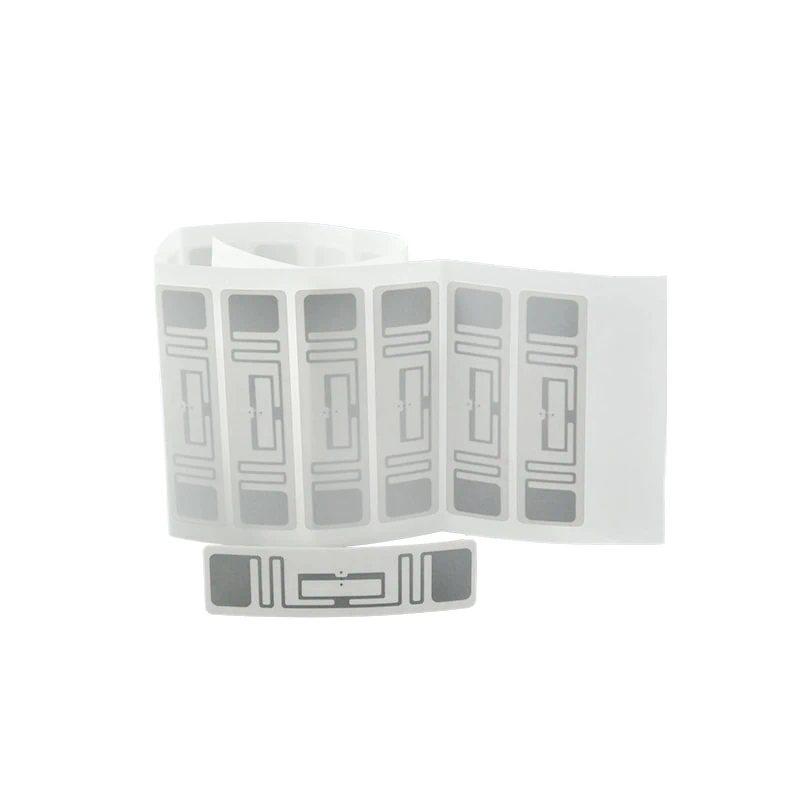Definition of IC Cards and ID Cards
IC cards, or Integrated Circuit Cards (also known as Smart Cards), are cards that embed a microelectronic chip into a card body that complies with ISO 7816 standards. These chips may contain memory (ROM, EEPROM), protective logic circuits, and even microprocessor CPUs. Only IC cards with CPUs are considered true smart cards. They are read/write capable, have large storage capacities, offer encryption functions, provide reliable data recording, and are more convenient to use.
IC cards can be broadly classified into three types based on the form of the embedded integrated circuit chip and the type of chip: contact cards, contactless cards, and dual-interface cards.
ID cards, or Identification Cards, are non-writable induction cards that contain a fixed number. Like magnetic cards, ID cards only use the “card number” without any confidentiality features. Besides the card number, there are no secure elements within the card, making the “card number” public and exposed. Therefore, ID cards can be considered “inductive magnetic cards.”
Access control cards are generally divided into IC cards and ID cards, with further specific classifications including EM, CPU, and M1 cards.
M1 Card: This is a type of contactless IC card that is passive and non-contact. It utilizes a PVC package for the M1 chip and an induction antenna, which are then molded into the card. The M1 chip refers to the NXP Mifare 1 series, produced by NXP, a subsidiary of Philips, with common models being S50 and S70. M1 cards are primarily used in automatic fare collection systems for buses, ferries, and subways, and are also applied in access control, identification, and electronic wallets.
EM Card: This is a type of radio frequency ID card that is also passive and non-contact.
CPU Card: Also known as a smart card, this card contains an integrated circuit with a microprocessor CPU, storage units (including RAM, program memory ROM (FLASH), and user data storage EEPROM), and a chip operating system (COS). A CPU card with COS functions like a microcomputer, offering not only data storage but also command processing and data security protection features. It is primarily used in transaction scenarios and is designed to be secure against hacking.
Differences Between IC Cards and ID Cards
-
1.Operating Frequency: The two types of cards operate at different frequencies, which means they are not interchangeable and cannot be used simultaneously with the same reader unless the reader is a dual-frequency type. IC cards operate at a high frequency of 13.56 MHz, while ID cards operate at a low frequency of 125 kHz. This difference in frequency inherently distinguishes them from each other.
| Operating Frequency | Encryption Status | Market Share | |
|---|---|---|---|
| ID Card | 125KHz | Non-encrypted | Mainstream |
| IC Card | 13.56MHz | Non-encrypted | General |
| Semi-encrypted | Mainstream | ||
| Fully encrypted | General | ||
| 868MHz | Fully encrypted | Few |
-
2.Storage Capabilities : In simple applications, IC cards and ID cards may seem similar since both use their inherent serial numbers. However, when it comes to more complex uses, the advantages of IC cards become quite evident. IC cards are read/write capable and can be encrypted, featuring 16 sectors that allow for use in multiple scenarios and the ability to store information for data exchange. In contrast, ID cards only have a card number with no storage capability, which greatly limits their functionality. ID cards can only utilize their serial number; they cannot be written to, encrypted, or used for anything beyond basic reading. Therefore, IC cards possess storage capabilities, whereas ID cards do not.
How to distinguish IC card from ID card?
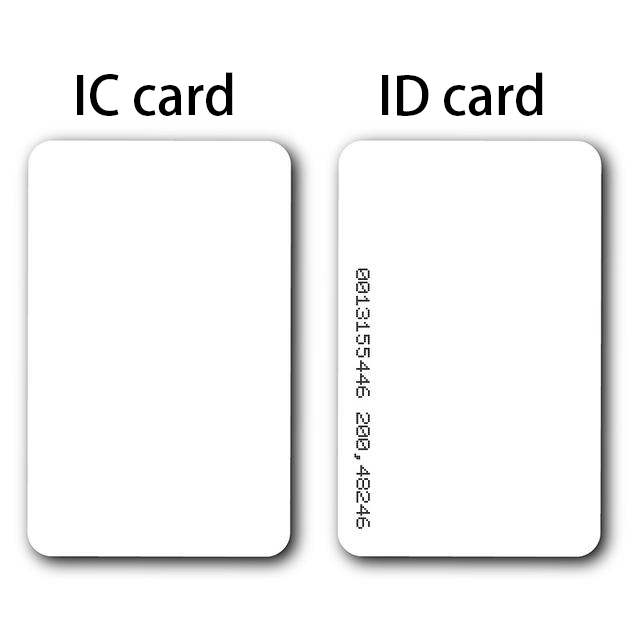
Visual Distinction Method
- IC Cards: The surface of the card is smooth and typically does not have a visible card number (though some may have a number).
- ID Cards: The card surface prominently displays a series of numbers indicating the card number.
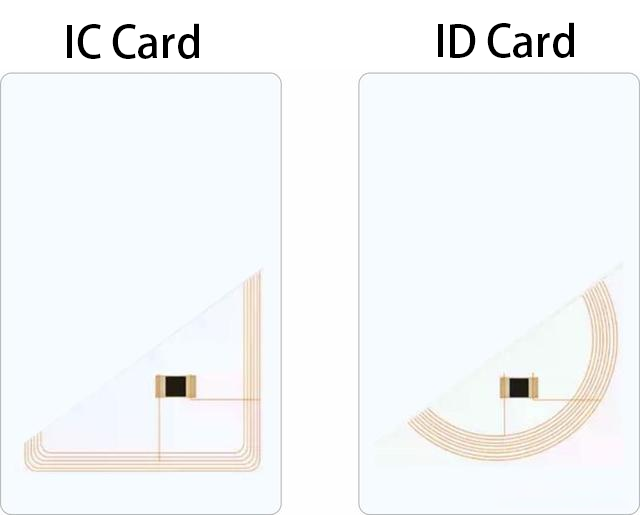
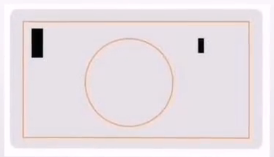
Coil Distinction Method
Method: Use a flashlight or your phone's flashlight to illuminate the card and observe the internal coil shape.
- IC Cards: The coil is rectangular and distributed around the edges of the card.
- ID Cards: The coil is circular and located in the center of the card.
- ICID Cards: These are dual-frequency cards that contain both ID and IC chip types.
Card Reader Distinction Method
- Standard Card Reader:
- After powering on the reader, place the card on it and observe its response.
- IC Cards: Typically produce a beep or a sound, and the indicator light may change color or flash.
- ID Cards: No response.
- After powering on the reader, place the card on it and observe its response.
Mobile Phones with NFC
-
- For phones that support NFC, turn on the NFC function and place the card near the NFC reading area (usually near the camera on the back).
- IC Cards: Generally, you will hear a prompt sound, and the phone will display a message indicating that an NFC tag is detected or prompt you to select an application.
- ID Cards: No response.
- For phones that support NFC, turn on the NFC function and place the card near the NFC reading area (usually near the camera on the back).
IC Card Encryption Types
-
Unencrypted:
- All sector keys are set to the default password, which is: FFFFFFFFFFFF. All sector data can be read directly.
-
Encrypted:
- After reading the card with the default password, at least one or more sectors will show “no key found” (or dead sectors).
- Only the data from unencrypted sectors can be accessed.
-
Fully Encrypted:
- After reading the card with the default password, it indicates that no valid key was found or all sectors show “no key found” (or dead sectors).
- When there are no keys, only the card number can be retrieved.
Applications
-
ID Cards: Cannot be encrypted and are easily duplicated and cracked.
-
IC Cards: Non-encrypted and semi-encrypted cards are also vulnerable to duplication; fully encrypted cards like SAK08 and SAK18 can still be cracked. CPU cards are secure and primarily used in transaction environments.
-
Frequencies:
- IC readers, IC cards, and NFC-enabled phones operate at 13.56 MHz.
- ID readers and ID cards operate at 125 kHz.
Therefore, NFC-enabled phones cannot duplicate ID cards due to the different operating frequencies. However, they can replicate unencrypted IC cards. Encrypted IC cards cannot be copied directly. To copy an encrypted IC card, one must first copy the corresponding unencrypted IC card using the phone, then read the encrypted IC card data with an IC reader, and finally write the retrieved data back to the phone's NFC.

